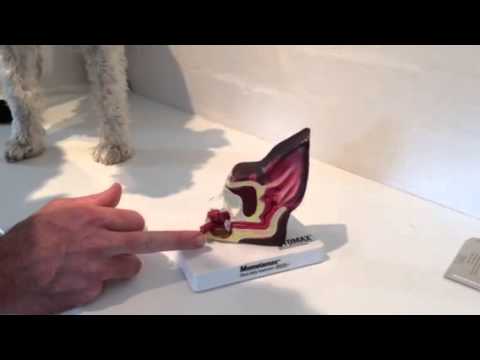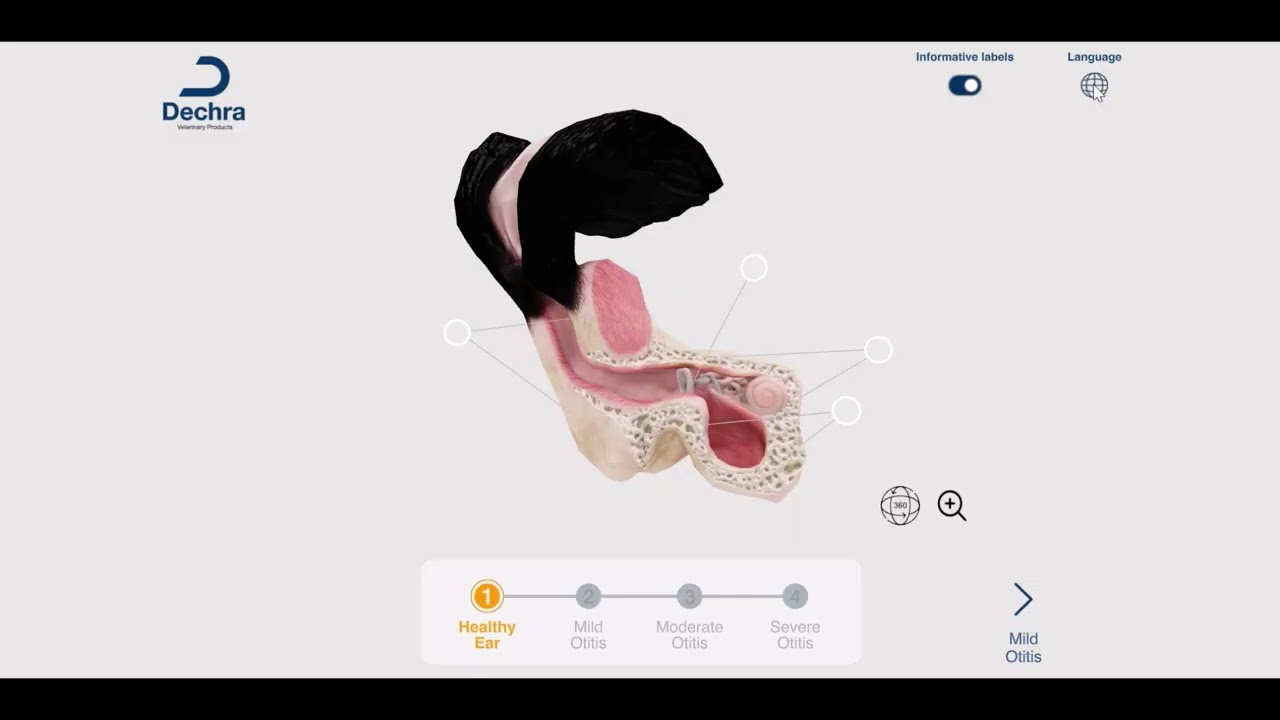Understanding the anatomy of a dog’s ear reveals much more than just the ability to hear. This intricate structure plays a crucial role in balance and emotional communication. The anatomy of a dog’s ear consists of three primary parts: the outer ear (pinna), the middle ear, and the inner ear. Each segment has unique functions that contribute to a dog’s overall health and well-being. Let’s dive deeper into the secrets of these fascinating structures!
## Anatomy of a Dog’s Ear: The Fascinating Secrets You Need
The outer ear, or pinna, is the first feature you notice. It’s flexible and can swivel, a nifty trick that helps capture sounds from different directions. Ears that perk up show alertness, while ears that droop indicate a dog’s mood of comfort or submission. This movement is essential in helping dogs communicate.
Next up, we have the middle ear, which holds the eardrum and three tiny bones known as ossicles. These bones act as amplifiers, transmitting sound vibrations from the eardrum to the inner ear. This system is essential for translating sounds into the signals that the brain understands.
Finally, there’s the inner ear. It contains the cochlea, a spiral structure that converts sound vibrations to nerve signals. It also includes the vestibular system, crucial for balance. Most pet owners may not realize that a dog’s ears enable them not only to hear but also to maintain their balance during energetic play. Understanding how these components work together provides insight into your dog’s health and happiness.

2. The Top 5 Fascinating Features of the Anatomy of a Dog’s Ear
1. Unique Structure of the Ear Canal
Did you know that a dog’s ear canal is L-shaped? Unlike humans, who enjoy a straight canal, this unique design can trap debris and moisture. This makes certain breeds, like Basset Hounds or Cocker Spaniels, more prone to ear infections due to moisture retention. Regular cleaning can help combat these issues!
2. Ears Reflect Emotional States
Your dog’s ears can tell you a story! Research shows that the position of a dog’s ears reflects their emotional state. Ears that are perked up signal excitement, while ears pinned back often indicate fear or submission. Being more observant of your dog’s ear movements can enhance your communication and strengthen your bond.
3. Hearing Range
Dogs have an astounding ability to hear sounds at frequencies up to 65,000 Hz! In contrast, humans can only hear sounds up to 20,000 Hz. This incredible range allows dogs to pick up on high-frequency sounds like ultrasonic dog whistles, effectively allowing them to interpret subtle cues, including their owners’ moods or intentions.
4. The Role of Localized Current in Ear Health
Recent studies reveal that localized electrical currents can improve ear health in dogs. These currents, found in certain treatments, enhance healing during ear infections and surgical recovery. This innovative approach offers fresh insight into veterinary practices, which could revolutionize ear care for our furry friends.
5. Breed-Specific Variations
Different breeds exhibit distinct ear anatomy, impacting their ear health. For instance, Greyhounds have narrow ear canals that can alter their hearing sensitivities, while breeds like French Bulldogs, thanks to their unique ear shapes, enjoy better airflow. This knowledge is vital for breed-specific ear care and hygiene.
3. The Connection Between the Anatomy of a Dog’s Paw and Ear Health
Believe it or not, the anatomy of a dog’s paw is closely tied to ear health! Many dogs often use their paws to scratch at their ears, inadvertently transferring bacteria and dirt. This can lead to ear infections, particularly if grooming isn’t regularly undertaken. Understanding this connection emphasizes the importance of maintaining cleanliness in both ears and paws.
Moreover, dogs with specific autoimmune skin conditions frequently have concurrent ear issues. This link underlines the significance of a holistic approach to pet care, considering how interlinked the health of your dog’s ears and paws truly are. Regular veterinary check-ups can help catch these problems early, ensuring that your furry friend stays healthy.

4. Comparative Insights: Anatomy of a Horse’s Foot and Its Hearing Capabilities
Though it may seem like comparing apples to oranges, there’s more connecting the anatomy of a horse’s foot and a dog’s ear than you might think. A horse’s foot consists of a delicate balance of bones, tendons, and the hoof wall, all working together for mobility and support—much like how a dog’s ear aids in balance and sensory perception.
Interestingly, horses also boast sharp hearing abilities, able to detect sounds at frequencies up to 25,000 Hz. While that’s less than a dog’s impressive range, it’s still quite remarkable and emphasizes how different species evolve specialized traits. Whether chasing birds or galloping through fields, each animal is uniquely equipped for survival.
Innovating Ear Care for Our Canine Companions
As our understanding of the anatomy of a dog’s ear deepens, it becomes clear that proactive ear care is essential. Regular veterinary exams can help identify any issues early, while consistent grooming routines mitigate risks of infections. Products like Vet’s Best Dog Ear Cleaner provide specialized hygiene support, making ear maintenance easier for owners.
Moreover, innovative care opportunities like laser therapy offer new ways to treat and prevent ear issues for dogs. Engaging proactively in these practices not only enhances pet health but also fosters an even tighter bond between you and your canine companion. Every wag of your dog’s tail can be a testament to happy, healthy ears, setting the stage for a lifetime of joyful play and affection.
In sum, the anatomy of a dog’s ear is a fascinating journey through biology, emotion, and communication. When you embrace this knowledge, you become a better advocate for your dog’s health and happiness, making every moment together even richer. So, the next time you see those ears perk up, you’ll know there’s a lot more going on than meets the eye—or ear, for that matter!
Anatomy of a Dog’s Ear: The Fascinating Secrets You Need
Not Just Floppy or Pointy: The Structure of the Dog’s Ear
When you think about the anatomy of a dog’s ear, you might picture floppy or pointy shapes, but there’s so much more going on beneath the surface. A dog’s ear is made up of three main parts: the outer ear, middle ear, and inner ear, each of which plays a vital role in hearing. The outer ear collects sound waves, while the middle ear amplifies them. Interestingly, the inner ear houses not just the hearing structures but also the vestibular system, which helps dogs maintain balance. Just like humans, they rely on this system for graceful movements—imagine a Shih Tzu dog black And white darting around!
Did you know that dogs can hear at frequencies much higher than humans? That’s right! While humans hear sounds up to about 20 kHz, dogs can detect sounds between 40 kHz and 60 kHz. This keen sense of hearing is crucial for tasks like hunting, which is why many people have bird hunting Dogs to assist them. You might be surprised to learn that a dog’s ear anatomy also includes tiny muscles that can rotate their ears independently. This helps them pinpoint the source of a sound, much like a police officer listening for action in their area—like Miami Dade Police Officer Danny torres chasing leads on a case!
Grooming and Health: Keeping Those Ears in Top Shape
Understanding the anatomy of a dog’s ear can help you keep those lovely floppy flaps in great shape. An ear canal that’s shaped like an ‘L’ means earwax can build up, leading to infections if not cleaned properly. Dog breeds with floppy ears are especially prone to such issues. Regular checks can prevent costly vet visits. Plus, cleaning should be gentle and follow the right method—just like knowing How long Does sertraline stay in Your system is important for caring for your furry friend’s anxiety.
One fun fact: while different dog breeds have unique ear shapes, they all share some commonality in the canal’s structure. Did you know that certain dogs have a natural flair for sound recognition? A well-trained dog can even differentiate commands and sounds from varying distances! Just like how many people are fans of popular TV shows starring actors like Annie Wersching, our dogs have their own ways of being entertained. Whether it’s barking excitedly at the sound of a doorbell or picking up on your tone, dogs really are amazing companions with incredible hearing!
The Science of Barking: Communication Through Their Ears
Dogs communicate through various sounds, but did you know that their ears also play a part in this chatter? Their ability to tilt and rotate their ears can express a range of emotions—from excitement to being on alert. If you own exotic pet birds like the dusky Conure, you know how much they also rely on communication, but dogs take it a notch up with their expressive ear movements. Even a flick of a dog’s ears can signal curiosity or unease.
Lastly, let’s not forget the unique styles of grooming and ear types across different breeds. Some dogs, like those with shorter coats, may require less maintenance, while others can end up with ear flaps that need extra care. Think of it as a true art form, almost like the creativity behind toys like the Optimus Prime toy! Caring for your dog’s ears is just part of the joy of being a pet parent, as it deepens your bond and keeps your furry friend happy and healthy. So, the next time you give your pup a scratch behind the ears, remember the fascinating anatomy of a dog’s ear and all it does for them!






